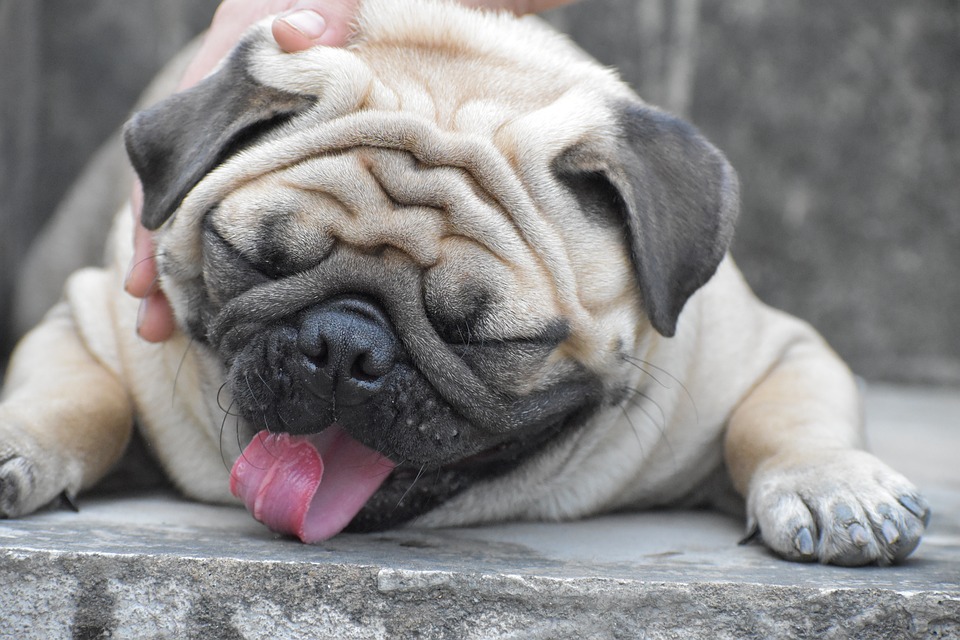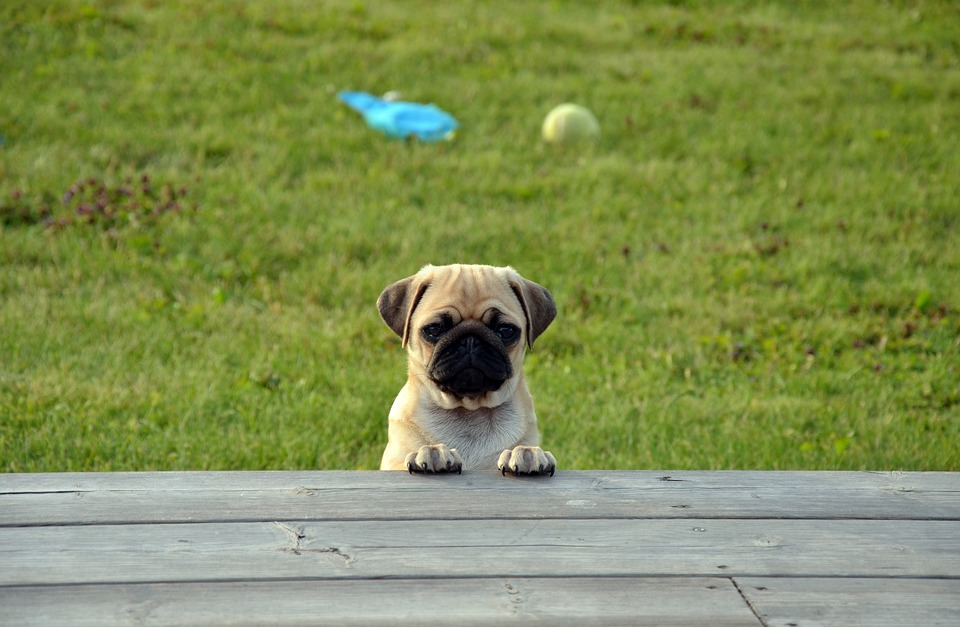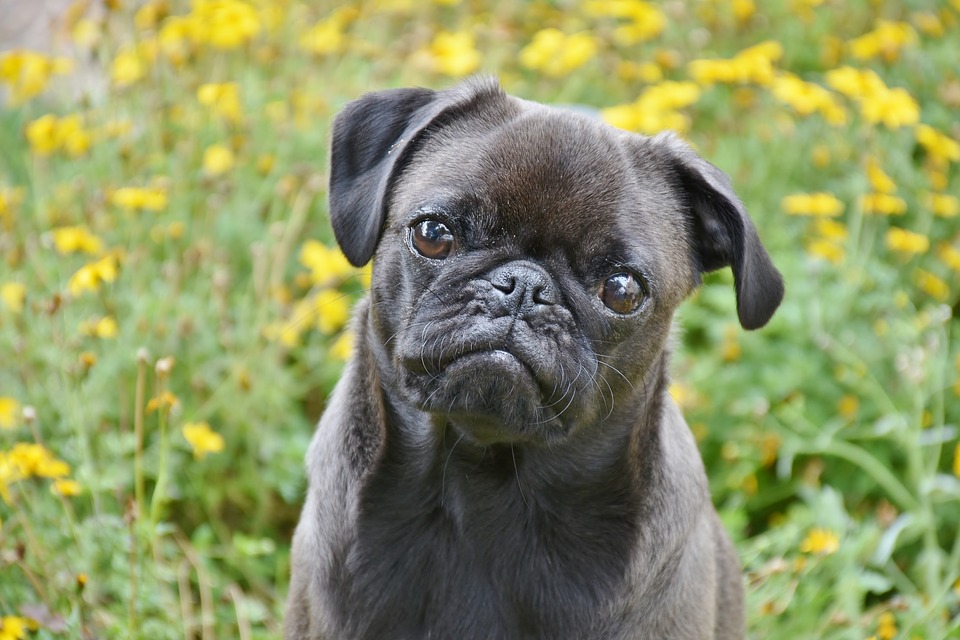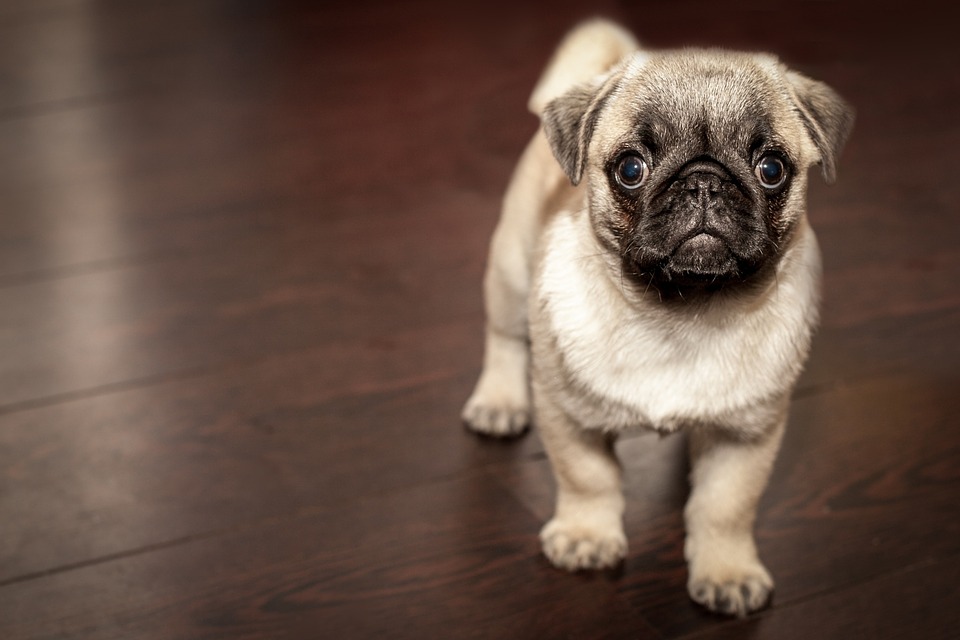The Pug
Vital Stats of Pugs

The following are vital stats of Pugs:
- Dog breed group: Toy
- Height: 10-13 inches
- Weight: 14-18 pounds
- Lifespan: 13-15 years
Physical Characteristics of Pugs
The distinguishing feature of the Pug is his attentive and soft expression. His coat is fawn and black in color, while also being short, fine and smooth.
The Pug is a compact and square-portioned dog that moves with a jaunty and strong gait, while his hindquarters roll slightly. This breed also has clearly defined black markings on his muzzle, ears, cheeks and forehead, which has deep and huge wrinkles.
Care for Pugs

Coat care for the Pug is minimal, as it only requires an occasional brushing to remove the dead hair. However, regularly cleaning and drying is essential to prevent skin infections, particularly in the dog’s facial wrinkles.
You can meet the Pug’s exercise needs with a daily and moderate leash-led walk or an energetic game. This breed is sensitive to humidity and heat, so he does best as an indoor pet. He is also prone to snoring and wheezing because of their flat, small muzzles.
Health of Pugs

Similar to any other breed, the Pug is prone to specific health problems. Major health issues can include the following:
- Pug Dog Encephalitis (PDE)
- Canine hip dysplasia (CHD)
However, minor health issues can include the following:
- Elongated palate
- Patellar luxation
- Stenotic nares
- Legg-Perthes disease
- Entropion
- Keratoconjunctivitis sicca (KCS)
- Hemivertebra
- Obesity
- Skin infections
Occasionally, you may notice the following with this breed:
- Nerve degeneration
- Demodicosis
- Seizures
- Distichiasis
- Allergies
History of Pugs
While it there is not much known about their early history, Pugs probably originated in China. Experts believe that Portuguese traders brought the short-coated, wrinkle-faced dogs to Holland in the 16th century. Pugs became popular in the Dutch royal court, making their way to England in 1689 when Dutch rulers William and Marry took over the English throne after the overthrow of Mary’s father, James II. Ever since, this breed has been popular with rulers and the rich and famous. Among their admires were King Louis XIV; Josephine, empress to Napoleon; Queen Victoria; the Duke and Duchess of Windsor; and fashion designer Valentino.
Additionally, the American Kennel Club (AKC) began registering Pugs in 1885. Today, this breed ranks 24th among the breeds registered by the AKC.
For more information on the Pug or other dog breeds, don’t hesitate to contact us here at All Pets Veterinary Medical Center with the link below!
















